-
 Bitcoin
Bitcoin $107,352.1067
0.28% -
 Ethereum
Ethereum $2,429.3531
-0.90% -
 Tether USDt
Tether USDt $1.0001
-0.02% -
 XRP
XRP $2.1894
4.62% -
 BNB
BNB $646.7968
0.36% -
 Solana
Solana $147.4290
4.03% -
 USDC
USDC $0.9998
-0.02% -
 TRON
TRON $0.2756
1.52% -
 Dogecoin
Dogecoin $0.1630
1.14% -
 Cardano
Cardano $0.5612
1.18% -
 Hyperliquid
Hyperliquid $37.0580
-0.05% -
 Bitcoin Cash
Bitcoin Cash $496.9410
-0.09% -
 Sui
Sui $2.7318
3.19% -
 Chainlink
Chainlink $13.1503
0.58% -
 UNUS SED LEO
UNUS SED LEO $9.0766
0.55% -
 Avalanche
Avalanche $17.7220
1.46% -
 Stellar
Stellar $0.2380
1.52% -
 Toncoin
Toncoin $2.8439
0.38% -
 Shiba Inu
Shiba Inu $0.0...01143
1.84% -
 Litecoin
Litecoin $85.8053
1.47% -
 Hedera
Hedera $0.1483
2.70% -
 Monero
Monero $314.3240
2.12% -
 Bitget Token
Bitget Token $4.6725
0.77% -
 Dai
Dai $1.0000
0.00% -
 Polkadot
Polkadot $3.3555
1.28% -
 Ethena USDe
Ethena USDe $1.0001
0.02% -
 Uniswap
Uniswap $7.0890
2.64% -
 Pi
Pi $0.5355
-3.40% -
 Pepe
Pepe $0.0...09393
1.06% -
 Aave
Aave $256.8136
-1.90%
What does PoW mean?
Proof-of-Work (PoW) is a cryptocurrency consensus mechanism where miners solve complex puzzles to validate transactions, earning cryptocurrency rewards. While secure, its high energy consumption drives exploration of alternatives like Proof-of-Stake.
Mar 06, 2025 at 02:48 am
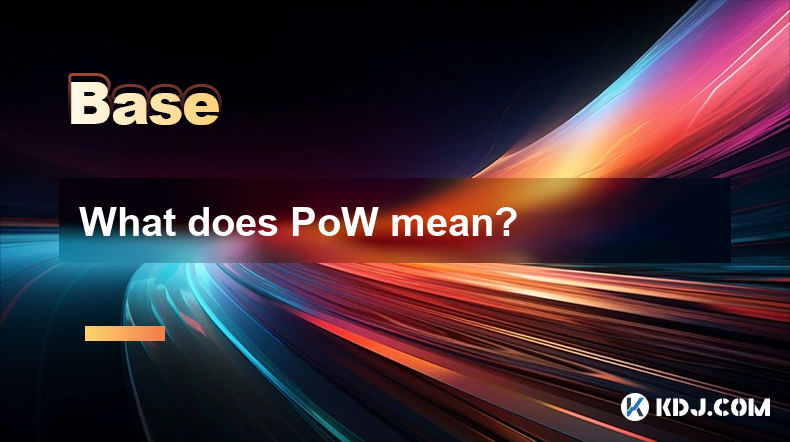
Key Points:
- Proof-of-Work (PoW) is a consensus mechanism used in many cryptocurrencies, most notably Bitcoin.
- PoW relies on miners solving complex cryptographic puzzles to validate transactions and add new blocks to the blockchain.
- The first miner to solve the puzzle gets to add the block and receives a reward, typically in the cryptocurrency being mined.
- PoW is considered secure due to its computational intensity, making it difficult for malicious actors to manipulate the blockchain.
- However, PoW is also energy-intensive and has environmental concerns.
- Alternatives like Proof-of-Stake (PoS) aim to address these drawbacks.
What does PoW mean?
Proof-of-Work (PoW) is a fundamental consensus mechanism in the world of cryptocurrencies. It's the method by which many blockchain networks validate transactions and add new blocks of data to the chain. Essentially, it's a system that requires significant computational effort to achieve a specific outcome, thus preventing fraudulent activities. Think of it as a digital puzzle that needs solving.
How does PoW work?
The core of PoW involves miners competing to solve complex mathematical problems. These problems are designed to be computationally intensive, requiring significant processing power. Miners use specialized hardware, often ASICs (Application-Specific Integrated Circuits), to tackle these puzzles. The first miner to find the solution gets to add the next block of transactions to the blockchain.
What is the reward for solving the PoW puzzle?
The reward for successfully solving a PoW puzzle is typically a predetermined amount of the cryptocurrency being mined. This reward incentivizes miners to participate in the network and maintain its security. Besides the block reward, miners also receive transaction fees included in the block they successfully mined. These fees are paid by users who want their transactions processed faster.
Why is PoW considered secure?
The security of PoW stems from its inherent difficulty. Altering the blockchain would require a malicious actor to control more than 50% of the network's computational power – a computationally and financially infeasible task for most, if not all, potential attackers in established networks. The sheer computational power needed acts as a deterrent against attacks.
What are the drawbacks of PoW?
A significant drawback of PoW is its energy consumption. The process of solving complex cryptographic puzzles requires enormous amounts of electricity, raising environmental concerns. The sheer amount of energy consumed by large-scale PoW networks has led to criticism and exploration of alternative consensus mechanisms.
What are some examples of cryptocurrencies using PoW?
Bitcoin, the most well-known cryptocurrency, uses PoW. Other prominent examples include Litecoin, Dogecoin, and Ethereum (although Ethereum is transitioning to PoS). These cryptocurrencies rely on the collective computational power of miners to secure their networks.
What is the role of mining hardware in PoW?
Mining hardware plays a crucial role in PoW. Specialized ASICs are designed specifically for solving the complex cryptographic puzzles. These machines are significantly more efficient than general-purpose computers and are essential for profitable mining. The constant arms race in mining hardware reflects the competitive nature of PoW.
How is the difficulty of PoW adjusted?
The difficulty of PoW puzzles is dynamically adjusted by the network to maintain a consistent block generation time. If the network's computational power increases, the difficulty increases proportionally, preventing blocks from being generated too quickly. Conversely, if the computational power decreases, the difficulty decreases to prevent excessively long block generation times.
What is the relationship between hash rate and PoW?
The hash rate represents the total computational power of the network participating in the PoW process. A higher hash rate indicates a more secure and robust network, as it would require more computational power to attack it. The hash rate is a key metric used to assess the health and security of a PoW-based blockchain.
What are the alternatives to PoW?
Proof-of-Stake (PoS) is a prominent alternative to PoW. Instead of relying on computational power, PoS uses a validator system where users stake their cryptocurrency to validate transactions. This is generally considered more energy-efficient than PoW. Other alternatives include Proof-of-Authority (PoA) and Delegated Proof-of-Stake (DPoS).
What are the environmental implications of PoW?
The high energy consumption of PoW has led to significant environmental concerns. The carbon footprint of some PoW networks is substantial, prompting discussions on sustainable energy sources for mining and the development of more environmentally friendly consensus mechanisms. The debate surrounding the environmental impact is ongoing and crucial for the future of cryptocurrency.
How does PoW contribute to decentralization?
PoW's reliance on distributed computational power contributes to decentralization. No single entity controls the network, as mining is open to anyone with the necessary hardware and resources. This distributed nature makes the network more resistant to censorship and single points of failure.
Common Questions and Answers:
Q: Is PoW the only consensus mechanism? A: No, PoW is one of several consensus mechanisms used in cryptocurrencies. Others include Proof-of-Stake (PoS), Proof-of-Authority (PoA), and Delegated Proof-of-Stake (DPoS).
Q: How much energy does PoW consume? A: The energy consumption varies significantly depending on the cryptocurrency and the efficiency of the mining hardware. It's a significant concern and a key driver for exploring alternative consensus mechanisms.
Q: Can I mine cryptocurrency using my home computer? A: While technically possible, mining with a home computer is generally unprofitable for most cryptocurrencies using PoW due to the specialized hardware required for competitive mining.
Q: Is PoW sustainable in the long term? A: The long-term sustainability of PoW is a subject of debate. The environmental impact is a major concern, and the increasing difficulty of mining could also pose challenges. The development and adoption of alternative consensus mechanisms are influencing its future.
Q: What is the future of PoW? A: The future of PoW is uncertain. While it remains a significant consensus mechanism, the push for energy efficiency and environmental sustainability is driving the adoption of alternative consensus mechanisms like PoS. The long-term viability of PoW will depend on technological advancements and evolving environmental regulations.
Disclaimer:info@kdj.com
The information provided is not trading advice. kdj.com does not assume any responsibility for any investments made based on the information provided in this article. Cryptocurrencies are highly volatile and it is highly recommended that you invest with caution after thorough research!
If you believe that the content used on this website infringes your copyright, please contact us immediately (info@kdj.com) and we will delete it promptly.
- RUVI Token Soars: Can It Eclipse Cardano's Forecast?
- 2025-06-29 02:30:12
- Meme Coin Mania: Can Little Pepe Outshine Shiba Inu and Dogecoin?
- 2025-06-29 02:30:12
- XRP Tokens: Navigating Financial Status and the Art of Buying In
- 2025-06-29 02:50:12
- Shiba Inu, Trump Coin, and the Crypto Bull Run: What's the Deal?
- 2025-06-29 03:50:12
- Coinbase on the 2025 List of Influential Companies: A Crypto Powerhouse?
- 2025-06-29 04:10:12
- Solana, Shiba Inu, and Pepe Coin: What's Hot and What's Not in the Crypto World
- 2025-06-29 03:55:13
Related knowledge
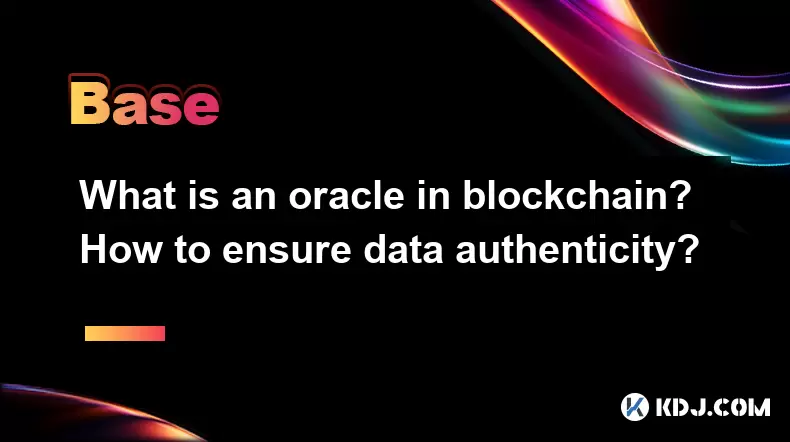
What is an oracle in blockchain? How to ensure data authenticity?
Jun 19,2025 at 08:49pm
Understanding the Role of an Oracle in BlockchainIn the context of blockchain technology, an oracle serves as a bridge between the blockchain and external data sources. While blockchains are inherently secure and decentralized, they cannot access real-world information on their own. Oracles enable smart contracts to interact with off-chain data such as ...
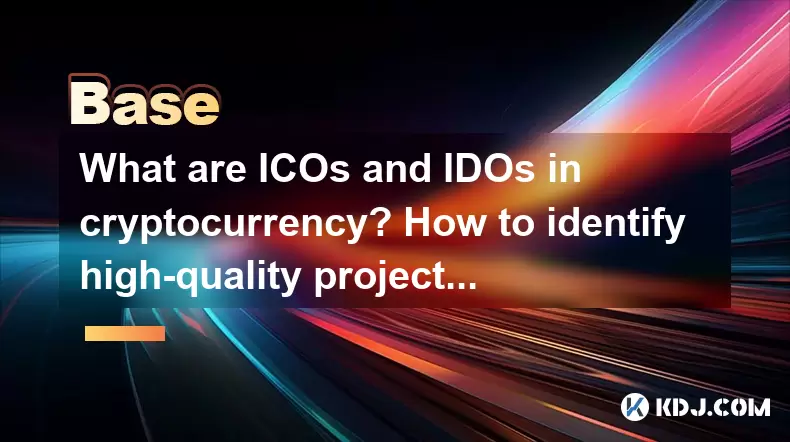
What are ICOs and IDOs in cryptocurrency? How to identify high-quality projects?
Jun 22,2025 at 11:49am
Understanding ICOs in CryptocurrencyInitial Coin Offerings (ICOs) are fundraising mechanisms used by cryptocurrency startups to raise capital for their projects. In an ICO, a company creates and sells its own tokens to investors in exchange for established cryptocurrencies like Bitcoin or Ethereum. The process typically involves the release of a whitepa...
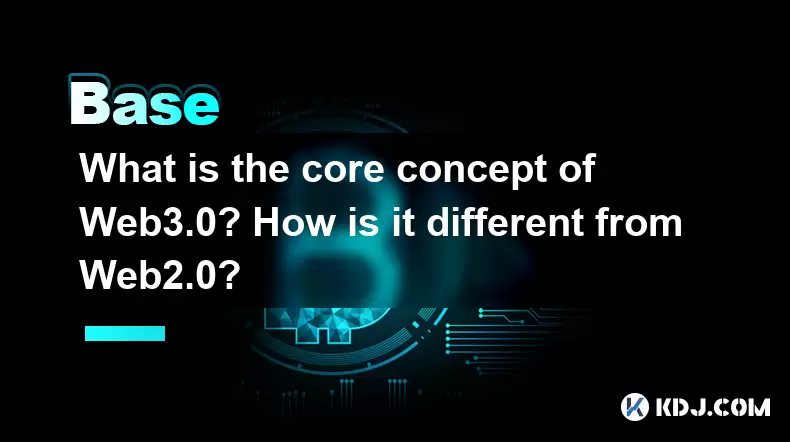
What is the core concept of Web3.0? How is it different from Web2.0?
Jun 21,2025 at 05:56pm
Decentralization as the Foundation of Web3.0The core concept of Web3.0 revolves around decentralization, which fundamentally challenges the centralized architecture of Web2.0. In Web3.0, control and ownership are distributed across a network rather than being held by a central authority or corporation. This is achieved primarily through blockchain techn...
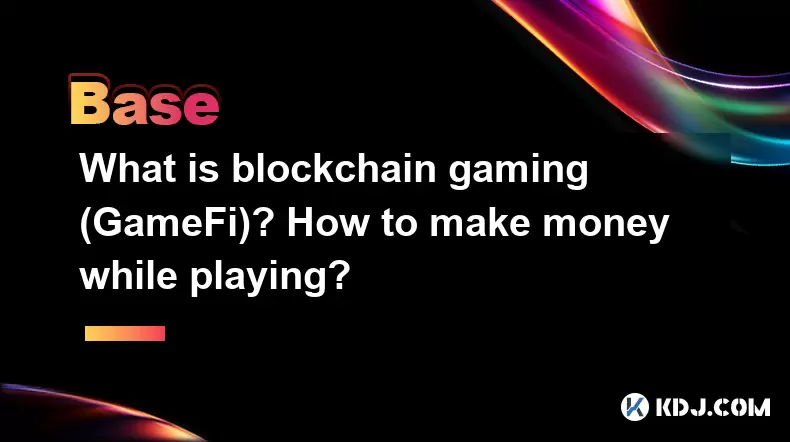
What is blockchain gaming (GameFi)? How to make money while playing?
Jun 20,2025 at 07:56am
Understanding Blockchain Gaming (GameFi)Blockchain gaming, often referred to as GameFi, is a fusion of blockchain technology and video games. It enables players to own in-game assets through non-fungible tokens (NFTs) and earn rewards via cryptocurrencies or token-based systems. Unlike traditional games where items are controlled by centralized develope...
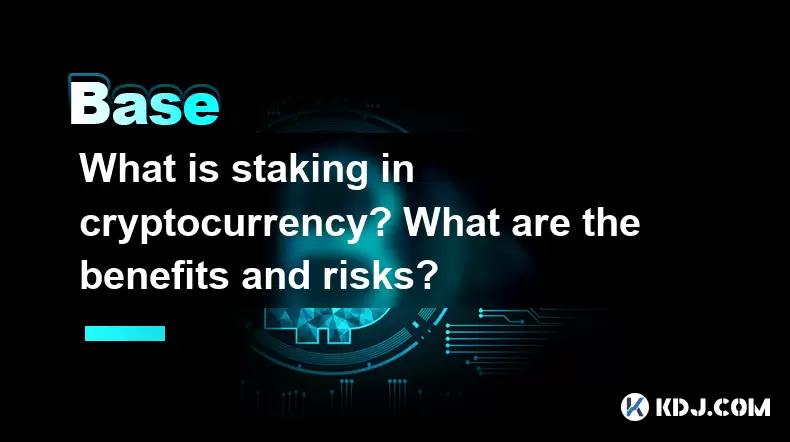
What is staking in cryptocurrency? What are the benefits and risks?
Jun 22,2025 at 10:01am
Understanding the Concept of Staking in CryptocurrencyStaking in cryptocurrency refers to the process of actively participating in transaction validation on a blockchain network that uses a Proof-of-Stake (PoS) consensus mechanism. Instead of miners competing to solve complex mathematical puzzles as in Proof-of-Work systems like Bitcoin, PoS blockchains...
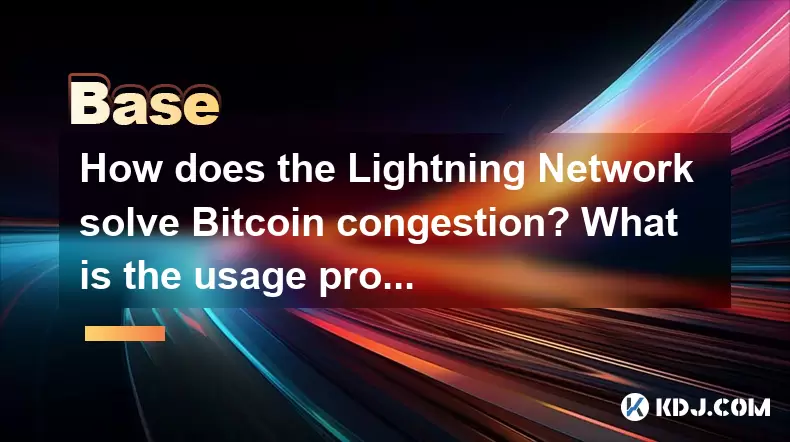
How does the Lightning Network solve Bitcoin congestion? What is the usage process?
Jun 23,2025 at 06:21pm
Understanding Bitcoin Network CongestionBitcoin, as a decentralized digital currency, operates on a blockchain that records every transaction in a public ledger. Each block has a limited size, typically 1 megabyte, which allows for only a certain number of transactions per second (TPS). When the number of transactions increases, the network becomes cong...

What is an oracle in blockchain? How to ensure data authenticity?
Jun 19,2025 at 08:49pm
Understanding the Role of an Oracle in BlockchainIn the context of blockchain technology, an oracle serves as a bridge between the blockchain and external data sources. While blockchains are inherently secure and decentralized, they cannot access real-world information on their own. Oracles enable smart contracts to interact with off-chain data such as ...

What are ICOs and IDOs in cryptocurrency? How to identify high-quality projects?
Jun 22,2025 at 11:49am
Understanding ICOs in CryptocurrencyInitial Coin Offerings (ICOs) are fundraising mechanisms used by cryptocurrency startups to raise capital for their projects. In an ICO, a company creates and sells its own tokens to investors in exchange for established cryptocurrencies like Bitcoin or Ethereum. The process typically involves the release of a whitepa...

What is the core concept of Web3.0? How is it different from Web2.0?
Jun 21,2025 at 05:56pm
Decentralization as the Foundation of Web3.0The core concept of Web3.0 revolves around decentralization, which fundamentally challenges the centralized architecture of Web2.0. In Web3.0, control and ownership are distributed across a network rather than being held by a central authority or corporation. This is achieved primarily through blockchain techn...

What is blockchain gaming (GameFi)? How to make money while playing?
Jun 20,2025 at 07:56am
Understanding Blockchain Gaming (GameFi)Blockchain gaming, often referred to as GameFi, is a fusion of blockchain technology and video games. It enables players to own in-game assets through non-fungible tokens (NFTs) and earn rewards via cryptocurrencies or token-based systems. Unlike traditional games where items are controlled by centralized develope...

What is staking in cryptocurrency? What are the benefits and risks?
Jun 22,2025 at 10:01am
Understanding the Concept of Staking in CryptocurrencyStaking in cryptocurrency refers to the process of actively participating in transaction validation on a blockchain network that uses a Proof-of-Stake (PoS) consensus mechanism. Instead of miners competing to solve complex mathematical puzzles as in Proof-of-Work systems like Bitcoin, PoS blockchains...

How does the Lightning Network solve Bitcoin congestion? What is the usage process?
Jun 23,2025 at 06:21pm
Understanding Bitcoin Network CongestionBitcoin, as a decentralized digital currency, operates on a blockchain that records every transaction in a public ledger. Each block has a limited size, typically 1 megabyte, which allows for only a certain number of transactions per second (TPS). When the number of transactions increases, the network becomes cong...
See all articles

























































































